André Dombrowski
Cezanne, Paris, l’année terrible and The Eternal Feminine
Jean-Claude Lebensztejn’s discovery that Cezanne’s 1880s depictions of Leda and the Swan were copied after a champagne bottle label—Champagne Nana no less—was eye-opening (figure 1).[1] The discovery proves that Cezanne embedded popular imagery into his work well after the development of the “constructive stroke,” and that basing his work on print culture was one of the crucial ways for him to establish links between painting and popular culture precisely at the time when his work seemed all the more autonomous from it. To copy the label allowed him not just to appropriate the form of a popular image and the specific relation it had to Zola’s novel, but also to adopt for his art a female body that had been already translated for him into the pictorial and consumptive norms of his moment.[2] At the same time, he could sever the ties the label had to the realm of mass culture by elevating it to the ranks of mythology. In this appropriation, Cezanne showed both an affirmation and a disavowal of the popular. The ambivalence of the maneuver furthers our understanding of Cezanne’s painting in two ways: it returns Cezanne to the social world of his times, redressing accounts of solitary genius with a subject born of a common context and spoken in a common language; and yet, it clearly shows Cezanne reading beyond the subject matter in the uniquely individuating terms of his painting.
Cezanne’s use and abuse of popular imagery did not stop there. Earlier, around 1870-71, Cezanne had chosen to copy in paint three fashion plates from La Mode illustrée.[3] The resulting paintings are known today as Interior with Two Women and a Girl, The Conversation, and The Promenade. The prints he selected were published in striking proximity to the most significant events then fresh in the French public’s mind: one was published shortly before, another just after the outbreak of the Franco-Prussian War in July 1870; the third appeared shortly before the Commune’s bloody week in May 1871. Despite his fairly faithful appropriations of his source imagery, Cezanne made several small, but significant changes, among them the addition of a tricolor, an unusually nationalist gesture for an artist whose belief systems so rarely made an appearance in his work.[4]
What to make of Cezanne’s choice of source material, and the urban and popular associations it brought into his pictorial practice? The conflicted position (Parisian) history and mass culture hold in Cezanne’s work is indicative of a larger concern in Cezanne’s work of the late 1860s into the early 1880s. Here is a painter who never paints a single forthright “historical” or “political” image, so unlike Manet’s painterly statements against the Second Empire’s foreign policy, or in sympathy with the Commune.[5] If politics enter Cezanne’s early paintings, they do so through the backdoor, as a peculiar persiflage of things closer to Cezanne’s life than anything as so impersonal as “politics” or “history.” In fact, the approach we find in his fashion plate imagery is not much different from that adopted in other early paintings, in which Cezanne explored political iconography—or intimations of the political—in unconventional ways, as in his decidedly anti-imperial staging of his friend Achille Emperaire in the guise of Ingres’ Portrait of Napoléon I.[6]
Even the iconography of The Eternal Feminine of around 1877, this brief essay demonstrates, was deeply tied to the images—ubiquitous after 1870—of the ailing but recovering allegories of Paris, and of France itself, after the ravages of war and revolution (figure 2).[7] Given how numerous such imagery was at the period, it is surprising that this connection has not been made previously. At some point, an image from the illustrated press might still surface that Cezanne copied outright for this enigmatic composition, one also updating Delacroix’s Sardanapalus, which has so often been named the crucial compositional source for The Eternal Feminine.[8] The closest image to be found is an illustration from La Vie parisienne of July 1871 entitled “Pauvre Paris!” (figure 3). The illustration does not just show an allegory of Goethe’s famous phrasing of “the eternal feminine leads us on high” from Faust (“L’Éternel féminin” became a French stock phrase in the early nineteenth century), but an allegory of Woman as Paris.[9] She has eyes as swollen and marked by grief as those famously once overpainted eyes in Cezanne’s painting—as Wayne Andersen has shown—after the Siege and the destruction wrought upon the city by the Commune.[10] A tear is falling down her cheek and her arm bleeding. As in Cezanne’s painting, the allegory levitates above a whole range of male professional types—soldiers, writers, as well as a painter prominently placed in the foreground, who have all assembled to pay homage and respect.
The La Vie parisienne illustration is by no means unusual for its moment. The journal itself published several other related images in the early 1870s (figure 4). And if indeed we can finish the three letters (“BAN”) written on the black box held by a man in a black frock coat on the left of Cezanne’s painting as “banque,” as some scholars have suggested, and see the man behind this figure as bearing a sack of money, then the painting references quite specifically the imagery documenting the public collections of funds to repay the war-debt, an iconography closely linked as well to the popular imagery just described. A composition by Edmond Morin entitled “Pour la patrie” and published in Le Monde illustré on February 17, 1872, is a typical example, showing a group of French citizens together assembling a pile of money and jewelry topped by a humble and shackled female allegory of the nation (figure 5).[11] This image has direct ties to the cover of L’Éclipse that Pissarro pasted onto the background of his Portrait of Cezanne, showing Thiers at the time of the early pay-off of France’s debt to Germany. The Eternal Feminine therefore bears a rich relationship—hard to see for us today, but quite recognizable then, at least to eyes accustomed to the illustrated press in the early 1870s—to the most standard formulas exemplifying the image culture of French national recuperation of the time.
To be sure, there are elements in Cezanne’s canvas that are the painter’s invention, not adopted from a source: the insertion of another cipher of the painter himself, a bald head seen from the back; the large painting in the background; and the fact that the painter on the right paints Mont Sainte-Victoire when looking at the female allegory. (Frédéric Mistral was among the first to remember the Midi-origins of Marianne, as in Guillaume Lavabre’s revolutionary chant “La Guérison de Marianne” of around 1792, connecting the female allegory regionally to Lavabre’s hometown of Puylaurens in the South of France, and thus, to some extent, justifying the conflation between figure and mountain in Cezanne’s painting.[12]) These features only stress the fact that The Eternal Feminine is a painting in which Cezanne not only staged the place of Woman in his culture’s symbolic order and engineered a “conflation of Woman and canvas” as Tamar Garb has argued, but through female allegory found a way to picture his commitment to, and geographic distance from, the war as well.[13]
“France is a Woman,” Maxime Du Camp claimed in his 1870s multi-volume compendium on Paris, justifying the ubiquitous connection between Woman and nation, whose history Maurice Agulhon has first comprehensively discussed and Hollis Clayson has taken up in her study of the image culture of the Franco-Prussian War.[14] When Cezanne painted The Eternal Feminine in the mid to late 1870s, the allegorical potential of the painting could have hardly been lost to any contemporary viewer familiar with the iconography. Painting “The Eternal Feminine” herself was hardly as straightforward a subject as the title suggests, given to the painting in the early twentieth century (it has also been referred to as The Triumph of Woman, among others). But these titles mask the political content of the painting, much more in evidence in likely the earliest title we have for it: La Belle Impéria, given to the painting when it first appeared in public in Vollard’s 1899 Cezanne-exhibition, then still connecting woman and nation (as well as referencing Balzac’s famous short story of that title).[15]
The Eternal Feminine is a painting, like the fashion plate copies, concerned with the place of Woman in the contemporary symbolic and political order. The (ab)use of popular culture is Cezanne’s access to those realms, guaranteeing at least a rudimentary allusion to populist form and tone. Along the way, the act of translation—with its inherent gaps and fissures, flaunting the fact of interpretation—allowed him to mark distance and difference (between Woman as sign and as body, as national symbol and historical protagonist) a central concern of his paintings. That his sources were ambivalently political to begin with—stretching from the realm of fashion illustration to national allegory—further underscored the ambivalent political messages of the paintings. Painting here emerges as not fundamentally different from other arenas of symbolic practice, except perhaps as able to shine a search-light on the processes of cultural symbolization itself. Cezanne’s “copies” used already prevalent social material as their primary source to insist on the fact that the modern painter has no recourse beyond the social. “Copying” print culture allowed him to point to the vestiges of allegory that the painting of modern life preserved, to probe what meanings—sexual, political, personal—emerged despite, or precisely because of, a painter’s focus on the “purely,” and the “exclusively,” visual. Sight, in the Cezanne here characterized, is always interpretative, colored by lust, sympathy, partisanship, and patriotism, a culture’s most entrenched ideologies masking as personal desire.
In part, Cezanne elected to “copy” popular images of l’année terrible, because the gesture provided him a means to underscore the degree to which, however small, social engagement mattered to his painting of the time. These paintings, including The Eternal Feminine, even offer a rare glimpse, passed up by Cezanne scholarship to date, of Cezanne’s reaction to the events of 1870 and 1871.[16] Admittedly, this engagement is by no means explicit, much less radical, in nature: the paintings in question are “merely” about fashion and allegory, or pretending to be so. But in this instance, “merely” implies a peculiar kind of historical commitment, a deliberate looking away from the center of historical action, namely Paris, in order to get a better look at it.
It is often claimed that Cezanne hid in Provence during the war in order to escape the draft and painted landscapes which show little evidence of the key events through which he lived.[17] The fashion plate copies and The Eternal Feminine therefore offer a rare glimpse at an uncharacteristic Cezanne, imagining the Franco-Prussian War and the Paris Commune, even if, or precisely because, his association remains vectored at one remove through the adaptation of war-time imagery and fashion plates. Unlike Cezanne himself, the artist’s role models and friends took active parts in the war and experienced the Commune firsthand. Manet and Degas were members of the Garde nationale and turned those direct experiences over into art, as Manet did in his famous lithographs of the Commune. The writer, historian, amateur painter and friend of Cezanne’s Numa Coste, too, fought in the war.[18] On the evening after the day the news of the proclamation of the Republic in Paris had reached Aix on September 5, a provisional Republican city council was established whose membership Le Mémorial d’Aix printed on September 11 (figure 6).[19] The names of Cezanne’s father, Louis-Auguste “Cezanne, banquier” [sic], as well as those of “Baille, eldest son, adjunct astronomer at the Paris Observatory,” and “Valabrègue, littérateur” featured prominently in the list of the city’s new officials. Although they did not attend meetings regularly, these close friends and family members of Cezanne made their political affiliation known.[20] Within this circle of family members and acquaintances, who were among the very few who might have known and seen the paintings at the time they were painted, Cezanne must have been made aware of his lack of political activism. The Eternal Feminine and his fashion plate copies, in part, give voice to this awareness as they hover, in an undecided way, between a willingness to engage history and partisanship, and a refusal to engage them head-on.
The ultimate result of Cezanne’s experimental forays into politics and mass culture was that sometime in 1870 or 1871, he went so far as to try his hand at an Allegory of the Republic, as two little studied drawings demonstrate.[21] Inspired by Delacroix’s Liberty Guiding the People of 1830, a nude female figure of the Republic—tricolor in one hand and a raised sword in the other—turns around, facing away from the viewer to address the crowd in the back of the scene. These efforts suggest why, when Pissarro portrayed Cezanne in 1874, he chose to augment his friend’s likeness with two caricatures hanging on the wall behind him: one of Courbet, who was at this point exiled to Switzerland for his political involvement with the Commune, and a caricature by André Gill for L’Éclipse, entitled “La Délivrance,” showing Adolphe Thiers paying off France’s war-dept to Prussia (figure 7).[22] Pissarro here contextualizes the other painter within the historical context of his artistic formation, even if his references, too, are taken from the realm of mass cultural representation and therefore only indirectly tied to the painter. They were not even particularly current: the Courbet caricature dated to 1867, and the L’Éclipse one to August 1872. But their inclusion in the portrait signaled above all the relevance of the political at large (and of the most political of realist painters) to both Cezanne and Pissarro’s art and imagination. In short, the fashion plate paintings, as well as the Portrait of Achille Emperaire and Pissarro’s Portrait of Paul Cezanne, are exercises not simply in what politics can mean in painting, but how much politics painting can hold before becoming a species of politics itself.
Below the 1871 “Poor Paris”-illustration so close in its form to The Eternal Feminine, La Vie parisienne printed a story entitled “History of a Gown.”[23] It is the autobiography of a dress created by Worth for a certain “baronne de Z…” in the last months of the Second Empire, written as if fabric had a voice, memory and feelings: “I was a French gown and a Bonapartist gown.” The dress tells the story of its short existence, ending in May 1871, observing history from a closet (the baroness lives on Place Vendôme of all places) and a brief number of public outings: the baroness wears it to the Tuileries (outshining Eugénie) and the Austrian embassy, before she retires it for the following year; she does not select it for the wardrobe she takes to her British exile during the siege, or her stays in Versailles and Bordeaux, deeming the dress not Republican enough and too extravagant; it hears cannon fire and the fall of the Vendôme Column; finally, the hôtel is invaded by Communards and the dress appropriated by the wife of “a general of the Commune.” On May 17, 1871, it is finally worn again, to another concert at the Tuileries: “At ten o’clock at night, I ascended for the second time the grand staircase of the Tuileries, in the midst of a dense and ignoble mob.” A few days later the Versaillais army invades Paris and the Communard general is shot and left to die on a pile of clothes in the hôtel staining the dress with blood. Two days later a Third Republican official finds the corpse and takes the dress to Worth to identify its rightful owner. The story ends in the words of the couturier: “«It was for Mme la baronne de Z… that I made this gown, eighteen months ago, and she never paid.»” Pay she did, if more in the loss of her social standing than in actual francs.
The story, in its conflation of history with history of dress, is not unlike Cezanne’s paintings of war and revolution detoured through the realm of fashion and national allegory. The voice, the unique perspective, the dress could bring to history (and not just its history) was useful to a culture of national loss, and, as I have argued, to Cezanne. Let a dress (or a fashion plate) do the talking, the accounting and taking stock. Because it was swept up in history, tossed by vicissitude, like Cezanne, like most French at the time. What more apt assessment of a culture after a lost war, and what better rationale of one’s absence from the Parisian center of action, than to portray a life populated with the inadvertent subjects of history, and not its active agents.
This essay consists of revised excerpts from the final sections of chapter five of my book Cezanne, Murder, and Modern Life (University of California Press, 2013).
[1] Jean-Claude Lebensztejn, “Une source oubliée de Cezanne,” Cahiers du Musée national d’art moderne 86 (Winter 2003-04); reprinted in Études cézanniennes (Paris: Flammarion, 2006), 46-59.
[2] Benjamin Harvey, “Cezanne and Zola: a Reassessment of ‘L’Éternel féminin,’ ” The Burlington Magazine 140, no. 1142 (May 1998): 312-18.
[3] On these paintings, see André Dombrowski, “The Emperor’s Last Clothes: Cezanne, Fashion and l’année terrible,” The Burlington Magazine 148, no. 1242 (September 2006): 586-94, as well as “Mark Roskill, “Early Impressionism and the Fashion Print,” The Burlington Magazine 113 (January 1971): 46. This is a brief follow-up to his longer study “Early Impressionism and the Fashion Print,” The Burlington Magazine 112 (June 1970): 391-95.
[4] This chapter relies heavily on the findings of Hollis Clayson’s excellent study of the imagery of the Siege of Paris: Paris in Despair: Art and Everyday Life under Siege (1870-71) (Chicago and London: The University of Chicago Press, 2002).
[5] See, among others, Manfred Fath and Stefan Germer, eds., Edouard Manet: Augenblicke der Geschichte, exh. cat. (Kunsthalle Mannheim, 1992-93), 90-97.
[6] Nina Athanassoglou-Kallmyer, “An Artistic and Political Manifesto for Cezanne,” The Art Bulletin 72, no. 3 (September 1990): 482-493. Compare to Cezanne’s Portrait of Emperaire the similarly persistent anti-empirical spoofs and rhyming games we find in Le Grognon provençal: “Voici les bouts-rimés proposés pour le prochain numéro: Empire, Vampire, Lait, Pistolet. Nous prions de nouveau de ne point toucher, dans la solution, à la politique ni aux bonnes moeurs.” Divrai, “Grognements,” Le Grognon provençal 1, no. 13 (March 20, 1869): 4. On early Cezanne and his political context, compare, too, Mary Tompkins Lewis, “Les premiers nus de Cezanne: du désordre et de l’harmonie dans le paysage,” in Cezanne aujourd’hui: Actes du colloque organisé par le musée d’Orsay 29 et 30 novembre 1995, ed. Françoise Cachin (Paris: Réunion des musées nationaux, 1997), 39-48.
[7] Götz Adriani suggested that the painting is linked to the iconography of female Republican allegories of the Second Republic: Cezanne: Gemälde, exh. cat. (Kunsthalle Tübingen, 1993; reprinted Cologne: DuMont, 2002), 75.
[8] Wayne Andersen, Cezanne and the Eternal Feminine (Cambridge: Cambridge University Press, 1981), 63-69.
[9] Roland Doschka, L’Eternel Féminin from Renoir to Picasso (New York and Munich: Prestel, 1996), 9-12.
[10] Andersen, Cezanne and the Eternal Feminine, 11-16.
[11] Compare also the illustration “Caisse de l’état. La question du cautionnement,” La Vie parisienne (July 15, 1871).
[12] Robert Marty, Marianne fille de Puylaurens, ou, Comment fut baptisée la République! (Puylaurens: IEO, 2006).
[13] Tamar Garb, Bodies of Modernity: Figure and Flesh in Fin-de-Siècle France (London and New York: Thames and Hudson, 1998), 179-95.
[14] Maxime du Camp, Paris, ses organes, ses fonctions et sa vie dans la seconde moitié du XIXe siècle, 6 vols. (Paris: Hachette, 1875), 6: 391; Maurice Agulhon, Marianne into Battle: Republican Imagery and Symbolism in France, 1789-1880 (Cambridge: Cambridge University Press, 1981); and Clayson, Paris in Despair, 114-62.
[15] John Rewald, with Walter Feilchenfeldt and Jayne Warman, The Paintings of Paul Cezanne: A Catalogue Raisonné, 2 vols. (New York: Harry N. Abrams, 1996), no. 299.
[16] Robert Simon, “Cezanne and the Subject of Violence,” Art in America 79, no. 5 (May 1991): 120-35, 185-86, here 123-24.
[17] For instance, we find the following sentence in the first paragraph of Maurice Merleau-Ponty’s famous essay “Cezanne’s Doubt,” propelling the mythology of Cezanne, the apolitical painter: “In 1870 he was painting at L’Estaque while the police were after him for dodging the draft.” Maurice Merleau-Ponty, “Cezanne’s Doubt (1945),” in Sense and Non-Sense (Evanston: Northwestern University Press, 1964), 9. In a letter to Alexis, dated June 30, 1871, Zola first mentioned Cezanne’s flight from the draft: “Ce que vous me racontez sur la fuite de Cezanne à Lyon est un conte à dormir debout. Notre ami a tout simplement voulu dépister le sieur Giraud [the owner of the house Cezanne and Hortense Fiquet occupied in L’Estaque]. Il s’est caché à Marseille ou dans le creux de quelque vallon. Et il s’agit de me le retrouver au plus tôt, car je suis inquiet.” Émile Zola, Correspondance, ed. B. H. Bakker, 11 vols. (Montréal: Presses de l’Université de Montréal; Paris: Éditions du Centre national de la recherche scientifique, 1978-2010), 2: 287. See also John Rewald, “Paul Cezanne: New Documents for the Years 1870-1871,” The Burlington Magazine 74, no. 934 (April 1939): 163-71.
[18] On Coste in 1870-71, see Marcel Provence, “Cezanne et ses amis: Numa Coste,” Mercure de France 187, no. 667 (April 1, 1926): 54-81, here 68. Coste was drafted into the army in the 1860s, starting as “Sergent, élève d’administration,” a title with which Cezanne addressed him in a letter of May 13, 1868, and fought in the Franco-Prussian War. See Paul Cezanne, Letters, ed. John Rewald (New York: Da Capo, 1995), 120, as well as Nina Athanassoglou-Kallmyer, Cezanne and Provence: The Painter in His Culture (Chicago and London: University of Chicago Press, 2003), 105, 271-72. Paul Alexis was more than happy to be back in Provence after the hardship of siege and revolution had ended; he wrote to Zola, likely on June 19, 1871, from L’Estaque: “Et aujourd’hui, un temps splendide, la Provence! La Méditerranée! la bouillabaisse! L’Estaque me paraît un Eden.” Quoted in Paul Alexis, Naturalisme pas mort, lettres inédites de Paul Alexis à Émile Zola, ed. B. H. Bakker (Toronto: University of Toronto Press, 1971), 43.
[19] “Proclamation de la République à Aix,” Le Mémorial d’Aix 37 (September 11, 1870): 2. On Aix in 1870-71, compare Martine and Pierre-Jean Chabert, eds., Aix-en-Provence au dix-neuvième siècle: Chroniques et faits divers du “Mémorial d’Aix” de 1837 à 1871 (Aix-en-Provence: Edisud, 1983), 103-4. See also “Liste republicaine des candidates,” Le Mémorial d’Aix 39 (September 25, 1870): 1.
[20] Notes from the séances of the Conseil municipal were published in Le Mémorial d’Aix, including lists of who attended. On December 29, 1870, for instance, Baille was present, yet Louis-Auguste Cezanne and Valabrègue absent for unknown reasons. On January 7, Valabrègue was present, Baille absent for reasons related to travel, and père Cezanne absent for unknown reasons. See Le Mémorial d’Aix 6 (February 5, 1871): 2.
[21] See Adrien Chappuis, The Drawings of Paul Cezanne: A Catalogue Raisonné, 2 vols. (Greenwich, CT: The New York Graphic Society, 1973), no. 198; and John Rewald, Paul Cezanne: The Watercolors, A Catalogue Raisonné (Boston: Little, Brown, 1983), no. 26.
[22] On Pissarro’s portrait, see Theodore Reff, “Pissarro’s Portrait of Cezanne,” The Burlington Magazine 109, no. 776 (November 1967): 627-33.
[23] A. B. C., “Histoire d’une robe,” La Vie parisienne (July 8, 1871): 735-38.

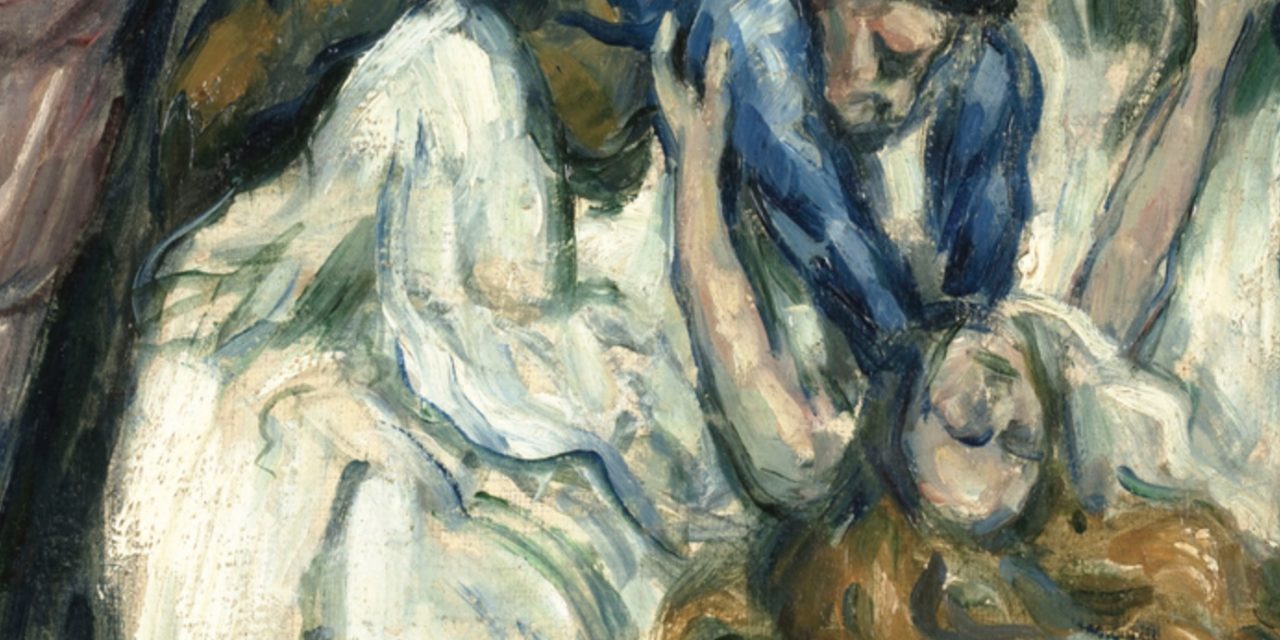
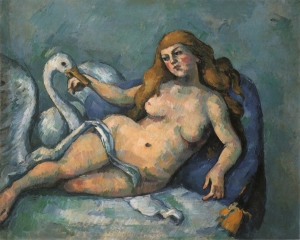
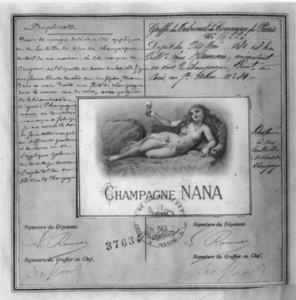
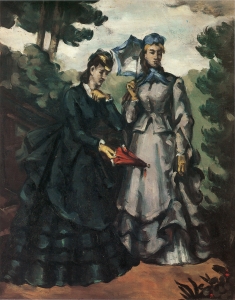
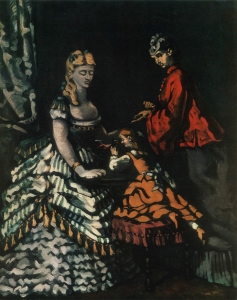
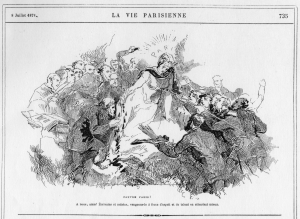
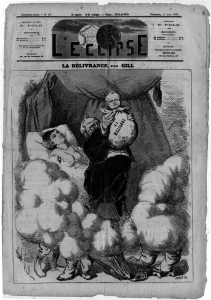
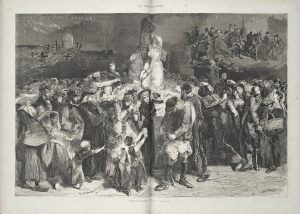

Vous devez être connecté pour poster un commentaire.